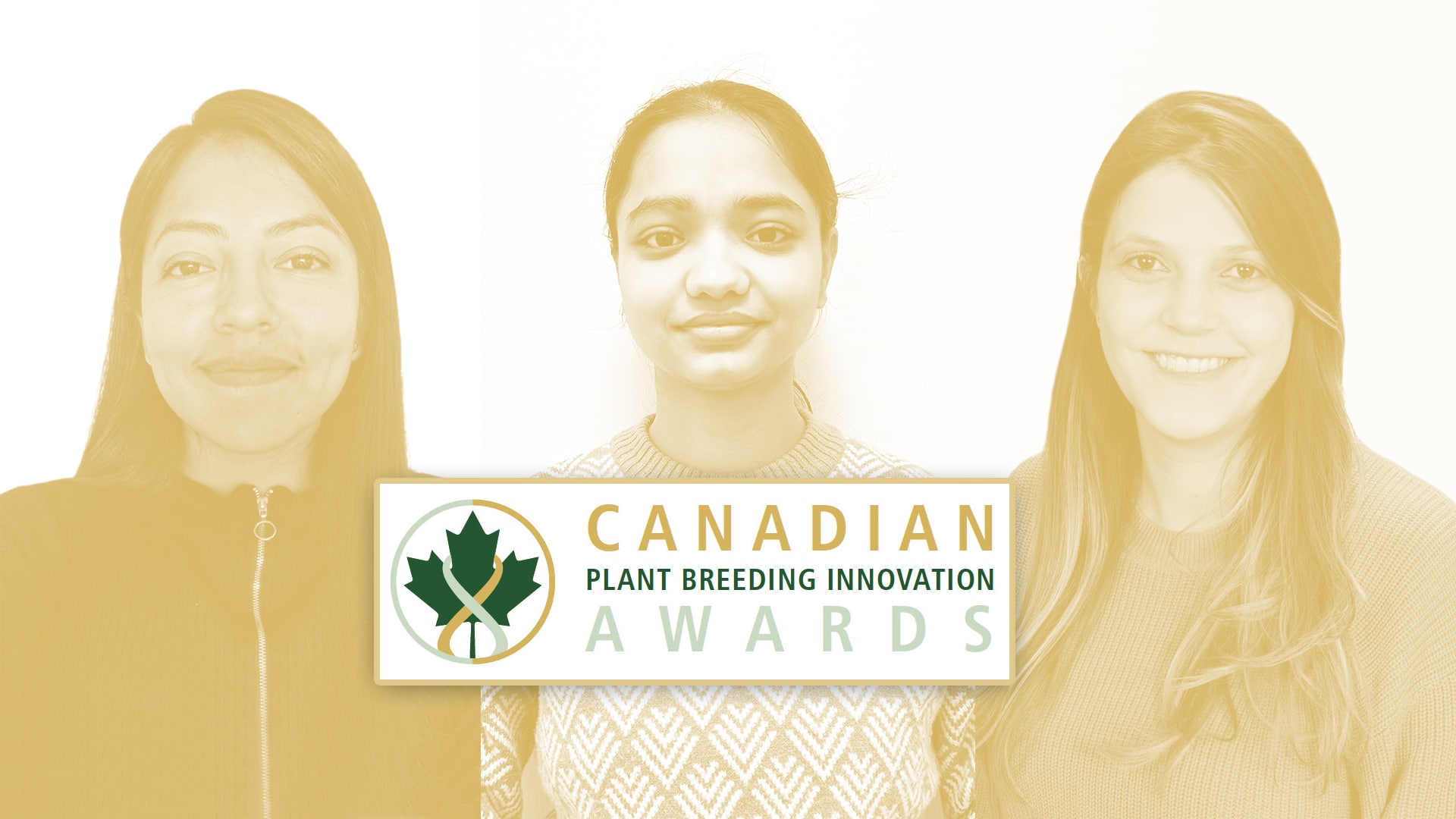There’s an old saying about the best laid plans of mice and humans often going awry. Despite all the work we put into breeding seed to grow the best crops possible, nature finds a way to foil us — be it with biotic or abiotic stress.
This week on Seed Speaks, our audience got to meet three people doing exciting new work in three distinct areas. Their work is significant enough to warrant their status as the 2024 Canadian Plant Breeding Innovation Awards scholars.
Rajbir Kaur of the University of Manitoba is doing a master’s degree and focuses on enhancing pod shatter resistance in canola using CRISPR-Cas9 gene editing technology; Sheila Maria Pereira de Andrade attends the University of Saskatchewan and her PhD research involves utilizing X-ray and RGB images to detect fusarium-damaged wheat kernels; and Laura Esquivel Garcia of McGill University is pursuing a master’s degree, working on a project within the Canadian Sclerotinia Initiative, studying a pathogen that affects multiple crops. The project involves genetic diversity studies, with a focus on sequencing the pathogen’s genome. The goal is to gather valuable genomic information for incorporation into breeding efforts.
All three joined host Marc Zienkiewicz to explain the value of their work.
The End of Pod Shatter?
Pod shatter-resistant canola is crucial for maintaining crop uniformity and minimizing losses, Kaur noted. The primary motivation behind her work is to create a hybrid that possesses shatter resistance, specifically tailored for use by public universities.
“While there are shatter-resistant varieties available from companies, they often come with royalties and licensing restrictions, preventing their use in public breeding programs,” she says.
Initially, her team utilized CRISPR technology to transform two genotypes of canola, specifically Brassica napus, with a CRISPR vector. They collected and tested hundreds of the resulting seeds, genotyping them using PCR. Fortunately, they identified positive mutants with the desired Cas9 insertion.
“Currently, we are at the stage of waiting for the plants to mature so that we can conduct phenotypic assessments. This will provide insights into how well the gene has been incorporated and whether our modified plants exhibit shatter tolerance in comparison to wild types or other Brassica napus plants.”
Figuring Out Sclerotinia

Garcia hopes to better understand the genetic makeup of Scleroinia sclerotiorum, which is the most costly canola disease in Canada.
“We’ve successfully acquired a dataset containing samples of isolates currently impacting commercial fields, thanks to our collaborators and the farmers who aided in sample collection,” she says. This dataset provides crucial insights into the current population of the pathogen across three Canadian provinces: Ontario, Quebec, and Alberta.
“Understanding this population is vital for our work. Beyond just having the dataset, we’ve managed to gather important information by phenotyping the pathogen. We characterized them based on the mycelia compatibility group they belong to and determined the level of pathogenicity in the collected samples.”
This information holds significance, especially when selecting the most aggressive isolates for screening in plant breeding programs. In her team’s case, they’re focusing on common beans, which currently exhibit only moderate resistance against this pathogen.
“By incorporating this valuable phenotypic data on white mold, we’re making progress in enhancing resistance. Moreover, our lab has successfully sequenced the entire genome of all the samples. With a clear understanding of the mode of reproduction and separation into groups, we are delving into the genomics aspect to identify differences in the pathogen’s genome.”

Foiling Fusarium
Andrade is focusing on a significant issue prevalent in Western Canada — Fusarium head blight. This disease poses a major threat to crop yield and grain quality, leading to the development of fusarium damaged kernels. Additionally, the pathogen produces mycotoxins, hazardous for both human and animal consumption.
To tackle this problem, she’s delving into the genome of wheat, specifically examining genes related to resistance, understanding the virulence of the pathogen, and exploring host-pathogen interactions.
“While some genetic studies have identified quantitative trait loci associated with resistance from the wheat side, a fully resistant wheat cultivar remains elusive due to the complex nature of resistance involving multiple genes,” she says.
“Phenotyping, particularly the detection of fusarium damaged kernels, is a time-consuming and sometimes unreliable process. Furthermore, the disease’s progression is heavily influenced by environmental factors.”
Her project’s goal is to enhance the phenotyping of fusarium damaged kernels. By achieving a more accurate phenotype, researchers can conduct more precise genetic studies. This, in turn, contributes to improving food safety by better understanding the genetic factors influencing Fusarium head blight resistance.
“The ultimate aim is to make strides in developing strategies that enhance crop resilience and mitigate the impact of this detrimental disease on both agricultural productivity and food safety,” she adds.
The CPBI Awards — which were formed in 2020 when the Seed of the Year and Canadian Plant Breeding and Genetics Awards came together under one umbrella — are an opportunity to recognize plant breeders at various stages in their careers.
The CPBI Innovation Scholarships (formerly Seed of the Year scholarships) recognize up-and-coming young plant breeders. The scholarships enjoy the support of 11 great sponsors this year (see below) with three $3,500 scholarships being handed out. The recipients are selected each year by the winner of our Plant Breeding & Genetics Award, who is David Lee for 2024.












